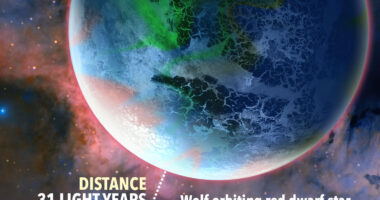AN INTERACTIVE map has been released showing exactly what would happen if different kinds of asteroids hit any point on the Earth’s surface.
Browser app Asteroid Launcher visualizes our worst apocalyptic nightmares with horrifying statistics – you don’t want to know how many people would die if a space rock struck Central Park.
Designed by creative coder Neal Agarwal, Asteroid Launcher found its home on the website neal.fun which features several entertaining applications.
While indeed fun, this latest addition can get pretty dark pretty fast as it reveals the gruesome fallout of a potential asteroid impact.
In fact, around 900,000 people would be immediately vaporized if a 1,500 foot diameter iron asteroid struck Central Park in New York City.
But the destruction doesn’t stop there.
According to the app, the asteroid would create a crater that is nearly 2,000 feet deep and a massive six miles wide.
The blast is equivalent to 12 Gigatons of TNT, and more energy would be released than a hurricane releases in a day.
Don’t worry, if you aren’t neutralized on impact, you’ll likely get caught in the massive fireball which erupts afterward.
The fireball would be over nine miles wide and kill an estimated 5.6million people.
Most read in News Tech
A huge 241 decibel shock wave would also kill over 5million, with tons of bystanders likely suffering lung damage and ruptured ear drums.
Agarwal created the application by using Apple Maps, Vice reported.
What makes the Asteroid launcher even more fun is seeing the different animations that pop up while you scroll through the statistics.
The creative coder designed unique illustrations for the crater, the fireball and the shock wave – all of which you’ll see when you read about the devastation of your unique space rock.
The results also depend on the asteroid you pick and how exactly it strikes the Earth’s surface.
You can choose what material the asteroid is made of as well as its size and how fast it’s going.
Agarwal has made tons of free projects that anyone can access on his website, but this particular one was special for the intense amount of math and physics that went into the design.
“I love playing out disaster scenarios in my head and so I’ve always wanted a tool that would help visualize the effects of some major natural disaster,” he told Motherboard.
“Asteroids are a good choice since their effects are so far-reaching. I think the tool could also help people gain more appreciation for our need to deflect asteroids like in NASA’s DART mission.”
Agarwal joked on Twitter about the time and energy that went into the project and even posted a picture of the kinds of physics equations he was dealing with.


Despite this, he has celebrated the success of the app, tweeting that more than 25 asteroids are being launched every second.
“I think I might hit Apple Map’s rate limit soon,” he wrote.










